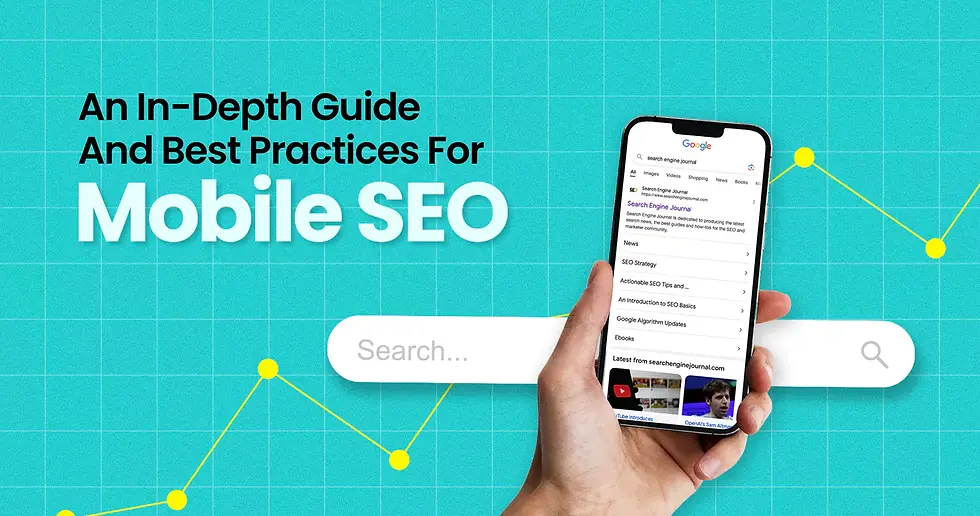In the contemporary digital era, mobile optimization in web design is crucial for delivering exceptional user experiences and maintaining a competitive edge. As mobile devices increasingly dominate internet usage, ensuring your website performs seamlessly across these platforms is essential. This article explores the significant role of mobile optimization, covering its evolution, impact, techniques, challenges, and future trends.
Introduction to Mobile Optimization in Web Design
Mobile optimization involves designing and developing websites to offer an optimal viewing and interaction experience on mobile devices. This means creating sites that are easy to navigate, quick to load, and visually appealing on screens of all sizes.
Over the past decade, mobile web usage has surged dramatically. Mobile devices now account for over half of global web traffic, reflecting a major shift in user behavior. This shift underscores the importance of mobile optimization in web design. A website that isn't optimized for mobile can suffer from poor user engagement, high bounce rates, and lower search engine rankings.
Understanding the Fundamentals of Mobile Optimization
To effectively implement mobile optimization, it's crucial to understand the core principles of mobile-friendly design.
1. Responsive Web Design: This approach uses fluid grids, flexible images, and media queries to create a layout that adapts seamlessly to various screen sizes. It ensures that users have a consistent and user-friendly experience across all devices.
2. Mobile-First Indexing: Search engines like Google now prioritize the mobile version of websites for indexing and ranking. This shift means that your website's mobile version must be as robust as its desktop counterpart to maintain or improve search engine visibility.

3. Touchscreen Readiness: Mobile users interact with websites through touch. Therefore, design elements such as buttons and menus should be large enough to be easily tappable, and navigation should be intuitive to enhance usability on touchscreens.
Impact of Mobile Optimization on User Experience
The impact of mobile optimization on user experience is profound. A well-optimized mobile site enhances usability by making navigation and interaction easy on smaller screens.

1. Mobile-Specific Content Strategies: Content should be concise and engaging, with multimedia that loads quickly and is easy to interact with. Mobile users often seek quick answers and straightforward interactions, making optimized content essential.
2. Reducing Bounce Rates: Users are likely to leave a site that is not mobile-friendly. By optimizing for mobile, you create a more engaging and satisfying experience, reducing bounce rates and encouraging users to stay longer.
3. Improving Engagement: A user-friendly mobile site can lead to higher engagement, with increased time spent on the site and more frequent conversions. Positive mobile experiences can enhance customer satisfaction and loyalty.
Mobile Optimization and SEO Performance
The relationship between mobile optimization and SEO performance is critical for achieving high search engine rankings. Mobile optimization directly influences search rankings, as search engines use mobile-friendliness as a ranking factor.

1. Mobile-Friendly Algorithm Updates: Search engines like Google have emphasized mobile-friendliness in their algorithms. Mobile-first indexing means that the mobile version of your site is crucial for search visibility.
2. Best Practices for Mobile SEO: To optimize mobile SEO, focus on fast page load times, use legible fonts, and implement structured data markup. Tools like Google PageSpeed Insights can help identify and address performance issues.
Economic Benefits of Mobile Optimization
The economic advantages of mobile optimization are significant. Optimized mobile sites can lead to higher conversion rates and increased customer retention.
1. Higher Conversion Rates: Mobile users are more likely to complete transactions when they encounter a seamless, efficient browsing experience.
2. Cost-Efficiency: A mobile-first approach can be cost-effective by reducing the need for costly redesigns. Addressing mobile needs from the start ensures long-term functionality and effectiveness across devices.
3. Increased Customer Retention: A positive mobile experience fosters customer loyalty and encourages repeat visits. Satisfied users are more likely to recommend your site, contributing to organic growth.
Mobile Optimization Techniques and Technologies
Several techniques and technologies are essential for effective mobile optimization.
1. Responsive Web Design: This technique involves fluid layouts and media queries to ensure content adapts to different screen sizes, maintaining a consistent user experience.
2. Accelerated Mobile Pages (AMP): AMP improves mobile page load speeds by simplifying HTML and limiting certain content types. This framework enhances performance and search rankings.
3. Progressive Web Apps (PWAs): PWAs combine web and app features, offering offline capabilities, push notifications, and fast load times. They provide an app-like experience through a web browser, enhancing functionality and engagement.
Challenges and Common Mistakes in Mobile Optimization
Mobile optimization presents several challenges and common pitfalls. Addressing these issues is crucial for maintaining a high-quality user experience.
1. Performance Issues: Slow loading times can frustrate mobile users. Prioritize performance by regularly monitoring and optimizing page speeds.
2. Inadequate Testing: Not testing across multiple devices can lead to inconsistent user experiences. Conduct thorough testing on various devices and screen sizes to ensure consistent performance.
3. Navigation Challenges: Complicated menus and small touch targets can hinder usability. Simplify navigation and ensure that touch elements are user-friendly to enhance the mobile experience.
The Future of Mobile Optimization in Web Design
The future of mobile optimization in web design is set for exciting developments. Emerging trends and technologies will continue to shape mobile user experiences.
1. 5G Technology: Faster network speeds provided by 5G will support more complex features and functionalities on mobile sites, enhancing user experiences.
2. Voice Search Optimization: As voice search becomes more prevalent, optimizing for voice queries will be essential for maintaining visibility in search results.
3. AI and Machine Learning: These technologies will enable more personalized and adaptive mobile experiences. AI and machine learning can drive dynamic content adjustments based on user behavior, enhancing relevance and engagement.
To stay ahead, businesses should stay informed about industry trends and invest in innovative technologies. Embracing advancements will ensure that your website remains competitive and meets the evolving needs of mobile users.
Conclusion
In conclusion, mobile optimization in web design is fundamental to effective website design. As mobile devices dominate web traffic, ensuring your website is optimized for mobile use is essential for enhancing user engagement, improving SEO performance, and achieving business objectives.
Whether partnering with a website creation agency or offering website design services in Hong Kong, focusing on mobile optimization will ensure that your web presence is effective and user-friendly across all devices. The role of mobile optimization in web design is crucial, and its importance will only grow as technology and user expectations evolve.
Comments